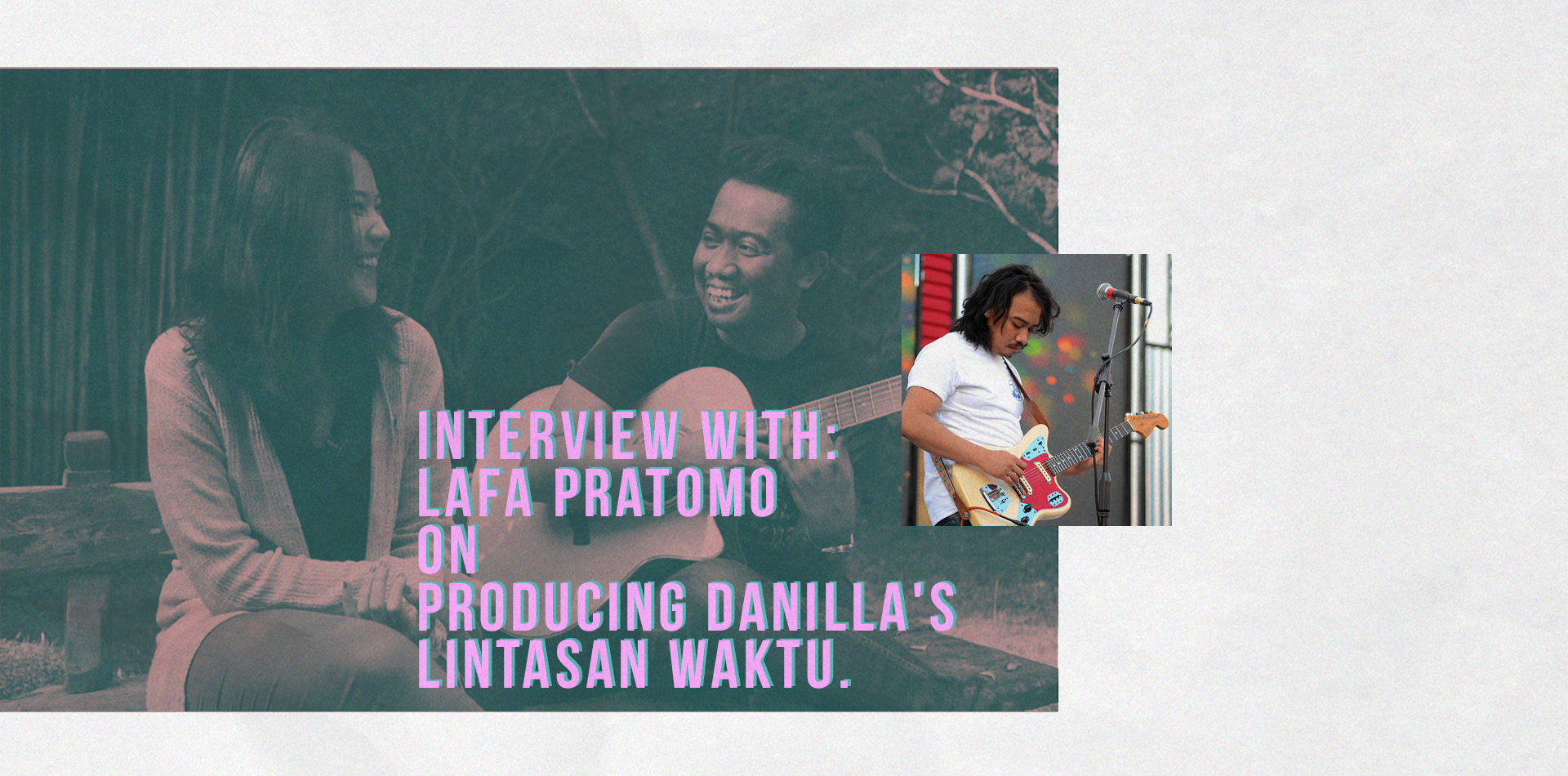
Lafa Pratomo Producing Danilla’s Album Lintasan Waktu
How is the creative process of working on this album?
Lafa :
I feel that the creative approach on this album was one of the most intense (work) for all my life. We had new revelations and valuable lessons during the process. Specifically, I was more involved as a co-producer. Danilla as the owner of the album took prominent role here. My job was more like turning her wild ideas to be represented as sounds. For example, she told me “I want this song to be violet, but mixed with orange, and the color is definitely not a typical cherish one, but tends to be more melancholic!” See? How do you interpret the idea and turned it to sound? Clearly it was a puzzle for me. There are musicians who is gifted with synesthesia, they have visions of color representing the sound they hear. It was very fascinating to enter such reality, it drives your brain not to think only about technical side, but also aesthetically.
Is there any messages to deliver on this album? Musically or emotionally, how do you present it?
Lafa:
After an extensive discussion with Danilla, I’m getting the impression that the “Lintasan Waktu” album is trying to deliver a darker image, a wild and dirty part of Danilla. This is undoubtedly a very personal aspect, therefore I took extra caution in interpreting it. The point is, I want whatever in her head is, if it started as “A”, the output is got to be “A” as well. Not C, not D, not even B. Because for me, the failure of a producer isn’t when the album flops, but when the producer fails to translate authentic idea from the artist.
On the music side, this album presents Danilla’s other musical side which was never revealed before. To compare, her first album “Telisik” was a manifestation of me as a songwriter and Danilla as the interpreter. Now in this album, we switched role. Danilla is the mastermind, and I’m the interpreter. Something like that. Well, musically, this album is true to her style.
Was there any problems during the work? Anything tricky?
To tell the truth, most problems occurred not on the technical stuff. The main problem was about mood, time/schedule, and funding. The only significant technical difficulty during the process was choosing a suitable microphone for the vocals. We went around, trying this and that, from the expensive ones to the cheapest but we didn’t find anything satisfactory. It ends on a Shure SM58. SO, all vocals on the album was using an SM58.
How did Kuassa plugins contributes in this album? Any specific parts?
Lafa:
The plugins from Kuassa obviously helped a lot, VERY VERY VERY MUCH. The EVE AT-1 made tone-shaping effortless, always works when anything needs to be EQ-ed. Other than that, the amp sims (Vermilion, Creme, and Cerberus) simplified the process of recording guitars and bass. We didn’t need to heat up the amp, put the mics on, searching for the best mic position, went back and forth between rooms to track the guitars or bass. And it’s not all about efficiency. These amp sims easily provides the sound I was looking for. In other words, these amps are qualified and very capable to meet the needs of music production properly. Its user friendly interface gives me an easier space to explore sound, especially when looking for something meticulous. Yes, I’m also using Kratos Maximizer to master the album. Rather than sending the data to be mastered overseas, I prefer to do it myself using Kratos, with healthy set of ears and enough information about mastering. I know it’s not an easy task, but it is possible to learn. Knowledge is everywhere, it can be from the internet or from your engineer friends. I don’t think the result would be significantly different with foreign mastering studios. At least that’s my opinion.
What made you interested in using Kuassa plugins?
Lafa:
Obviously because it is a product from local minds, the creative and genius ones. The truth is, I’m very proud of using it, compared to foreign brands. It’s an excellent product from my country. What else do you need?

